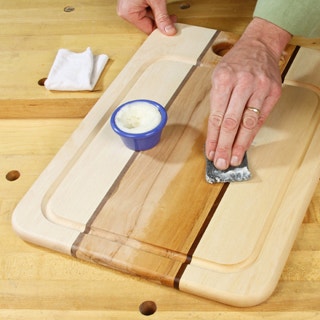Paste or Fine Furniture Wax?
I'm wondering whether there is a difference between paste wax and the fine furniture wax I use on some of my projects. I know that woodworking stores carry a variety of waxes, but don't know whether there are any significant differences between various kinds of wax, whether paste wax is just regular furniture wax or something else, etc. What can you tell us about waxes, whether there are reasons to use different ones for different purposes, and when and why? - Christopher Hodgkin
Tim Inman: This is an area where, if you asked 10 woodworkers, you'd get 12 different answers ... I'll add my own "13th" opinion. Let's put waxes into two simple categories for the sake of our discussion: furniture wax and automobile wax. Do not use automobile waxes on furniture; period. I won't discuss why here, but there are reasons. You want to be using waxes made for furniture in your shop. Paste wax refers to waxes that are, well, pasty and thick as opposed to liquids which will pour. There's more wax and less liquid in the pastes, and they are traditional. If you have one, but not the other, use it, as Yogi might say. The makeup of the waxes is the finesse part. Some wax is harder than others. Some wax is "slipperier" than others. Waxes come from plant sources, oil wells and animals. Over the centuries, folks have mixed their own to suit themselves. Plain old beeswax is a wonderful material. For my tools' surfaces, I just dissolve beeswax in some mineral spirits and use that on the tops and slides.
Whatever wax you use, do use some. I think you'll find it makes using your tools and work surfaces much more pleasurable and easier to clean up. I'll share some advice I got from a dear old English turner friend of mine many years ago about using wax: "Little and often." Don't apply too much, and apply it frequently.
Wax products are profitable and, thus, highly marketed in the trades. Sales claims about one being "magically superior" to another are mostly sales hype. They're all good, and some are a little better/different than others. Any is usually better than none. Other than that, books and books have been written about the subtle nuances of the different products. I'll spare you that fun until another time.
Chris Marshall: On my workbench, I use basic untinted paste-type wax sold in a can for furniture. Cheap, simple and useful for so many things, as Tim points out.
Keep the inspiration coming!
Subscribe to our newsletter for more woodworking tips and tricks






